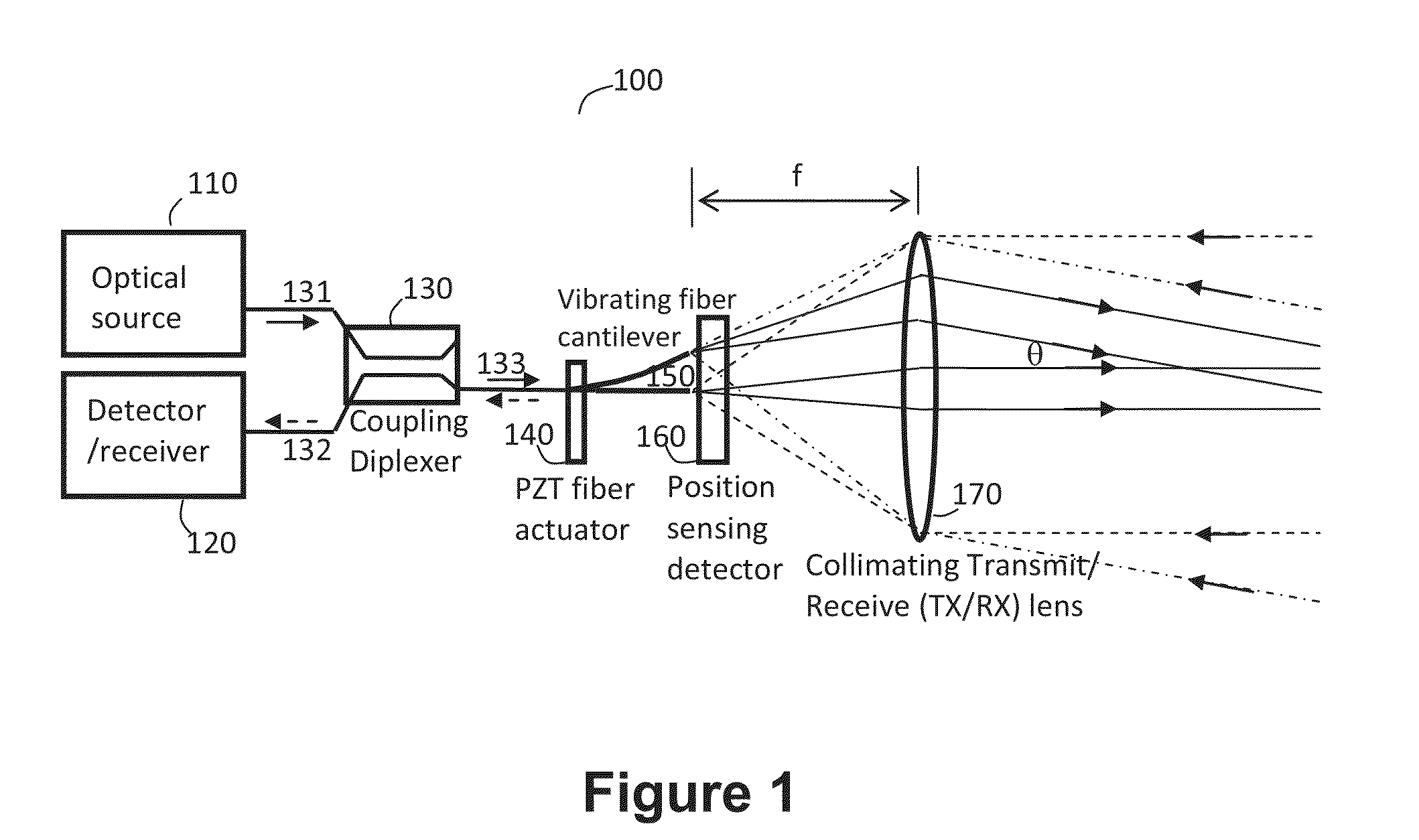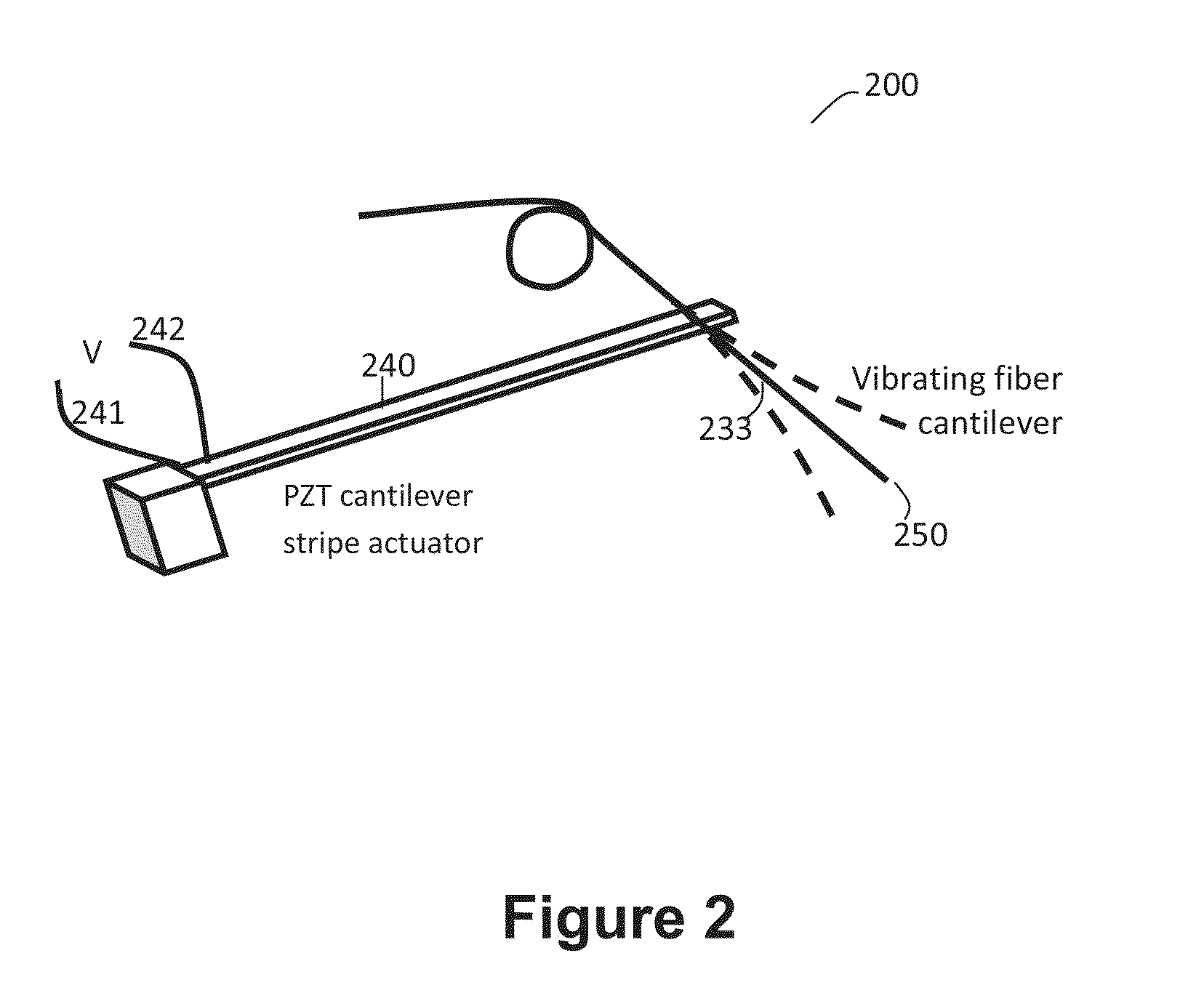Compact fiber-based scanning laser detection and ranging system
a fiber-based scanning laser and optical fiber technology, applied in the field of optical fiber-based scanning laser detection, can solve the problems of limited scanning speed and angle, high cost of scanning techniques, and large volume and weight, and achieve the effect of sufficient spatial resolution
- Summary
- Abstract
- Description
- Claims
- Application Information
AI Technical Summary
Benefits of technology
Problems solved by technology
Method used
Image
Examples
Embodiment Construction
[0016]An exemplary LADAR system 100, shown in FIG. 1, is based on the following functionalities: 1. Fiber-based monostatic transmitter / receiver, 2. Fiber beam scanner based on a laterally vibrating fiber cantilever (e.g., 140), 3. Position sensor (e.g., 160) to monitor the transmitted beam position and hence propagation angle of the transmitted collimated optical beam. These components and their interaction are detailed below.
[0017]Exemplary components of such an LADAR system 100 are an optical source 110, e.g., an eye-safe 1550 nm pulsed fiber laser or master oscillator-power-amplifier (MOPA), and a photo detector 120 for converting the received optical LADAR pulses into electrical signals that are processed by the receiver electronics to extract range information. The all-fiber MOPA incorporates a fiber laser that amplifies an optical seed pulse from a semiconductor laser diode, of a fiber-coupled type that is readily available as standard fiber telecommunications products. The pu...
PUM
 Login to View More
Login to View More Abstract
Description
Claims
Application Information
 Login to View More
Login to View More - R&D
- Intellectual Property
- Life Sciences
- Materials
- Tech Scout
- Unparalleled Data Quality
- Higher Quality Content
- 60% Fewer Hallucinations
Browse by: Latest US Patents, China's latest patents, Technical Efficacy Thesaurus, Application Domain, Technology Topic, Popular Technical Reports.
© 2025 PatSnap. All rights reserved.Legal|Privacy policy|Modern Slavery Act Transparency Statement|Sitemap|About US| Contact US: help@patsnap.com



